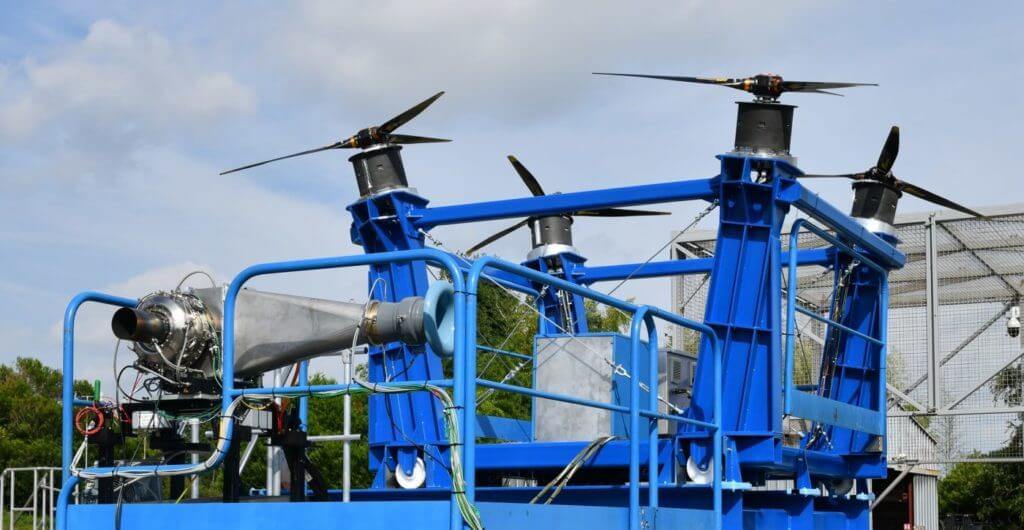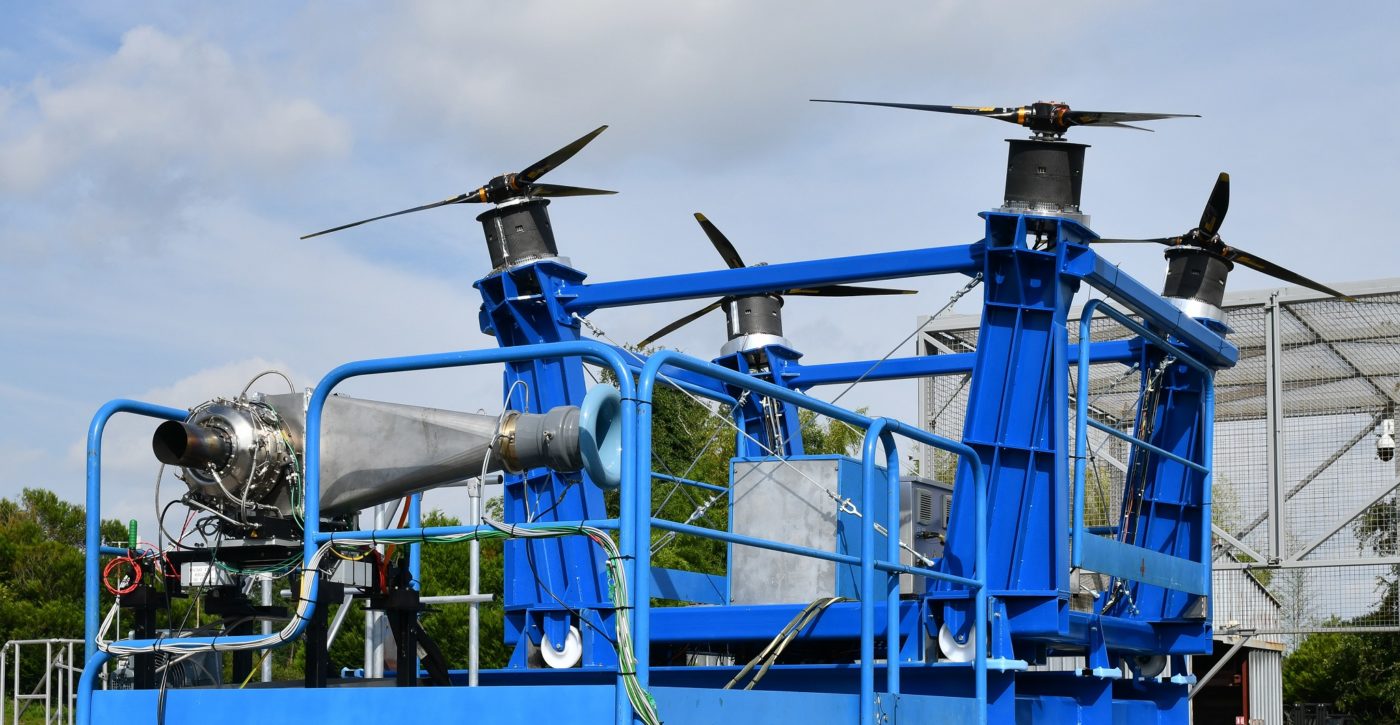Safran Helicopter Engines is broadening its horizons to hybrid engines and new rotorcraft architectures, as well as digital services for its customers.

The Pau, France-based company is gearing up to equip Bell’s vertical take-off and landing (VTOL) vehicle demonstrator for air taxi applications. The first ground test of a hybrid propulsion system took place in mid-July. Safran says it can support an entry into service in 2025.
The 100-kilowatt (130-shaft-horsepower) hybrid propulsion system Safran has ground-tested is based on the e-APU, an auxiliary power unit in service with the Leonardo AW189 super medium twin. Safran’s system can feed the motors with electric current from the batteries and, for peak demand, directly from the generator.
The engine manufacturer plans to evaluate a 500-kW system over the next few months; it would be compatible with a four-passenger VTOL vehicle.
Meanwhile, for Airbus Helicopters’ Racer compound helicopter, Safran is developing a second version of the 2,500-shp-class Aneto, the Aneto-1X. It shares a common turbomachinery with the Aneto-1K (in development for the beefed-up Leonardo AW189K). The hardware’s differences lie in the engine mounts and accessory gearbox.
The engine control software is different, too, as the Racer will have distinct needs in engine running speeds. The first ground test is scheduled for the fourth quarter of 2019, said Safran Helicopter Engines’ CEO Franck Saudo.
Besides those futuristic developments, conventional engines and conventional helicopter architectures, which can be anticipated to remain the mainstay of the industry for at least a decade, are keeping Safran’s engineers busy.
The Aneto-1K now has its EASA certification pegged for early 2019, instead of the third quarter of this year (as planned one year ago). Saudo did not have any comment on the delay. “The development is nominal, 4,000 ground test hours have been logged in addition to Leonardo’s flight-test program,” he said.
The 1,100 to 1,300-shp Arrano-1A will be EASA certified early in 2019, and the first production example will be delivered in the first half of that year, according to Saudo. The program’s schedule is thus slowly slipping to the right but remains consistent with the Airbus H160 medium twin program. The entry into service of the latter was, late last year, delayed to late 2019.
Arrano-1A certification testing is complete, said Saudo, after 7,300 hours of trials, including 1,600 in flight on the H160.
The 1,800-shp-class Ardiden 3C was EASA certified last April, supporting the Avicopter AC352 program. The AC352 is the Chinese counterpart of the Airbus H175 super medium twin (under a 50-50 joint effort). Two Chinese companies – Dongan and Hapri, parts of the Aero Engine Corporation of China consortium – have contributed to the development of the engine, known in China as the WZ16. The AC352 first flew in December 2016.
Also in April, Safran received the EASA certification of the 986-shp Arriel 2H, which powers the in-development Avicopter AC312E. The medium twin is similar to the Airbus AS365 Dauphin.
In customer support, the company is committed to offering more digital services. The latest in the offering is Expert Link, a new video assistance service. It allows the customer to connect with Safran Helicopter Engines experts through a live video feed. The goal is to facilitate technical diagnosis and guide them through a maintenance task. Expert Link features a secure datalink and is compatible with most smartphones, tablets, borescopes and smart glasses.
Among the first customers are Heli Austria, Heligo (the holding company of Mont Blanc Hélicoptères, Eagle Valais and Swiftcopters in France and Switzerland) and Florida-based Rotortech Services, Safran said.
Saudo describes the global helicopter market as undergoing “progressive recovery,” including offshore oil-and-gas operations. This year, the production of approximately 900 engines is planned at Safran’s factory – a 23 percent hike over last year. According to Saudo, a greater market share accounts for the increase.










Hybrid turbo shaft is a good way to go.